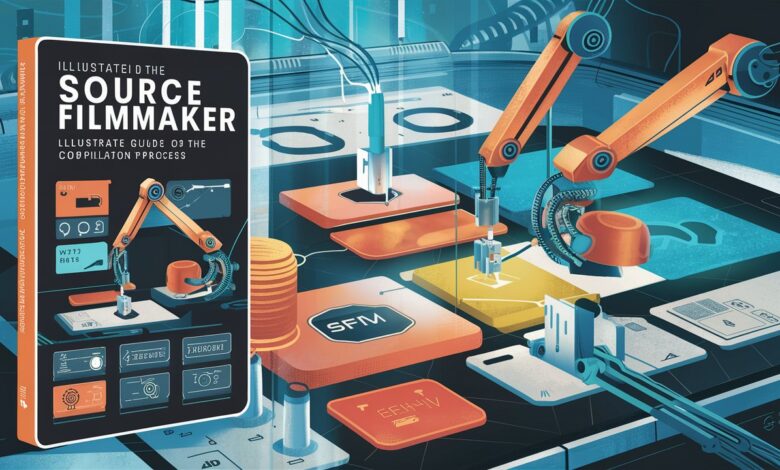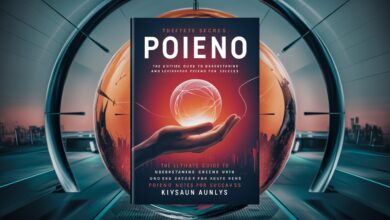SFMCompile: Complete Guide to Source Filmmaker Compilation

SFMCompile is a powerful and widely used tool in the Source Filmmaker (SFM) community, designed to simplify and streamline the process of compiling models, materials, and assets. Whether you are a beginner trying to understand how SFM compilation works or an experienced creator aiming to enhance your workflow, understanding SFMCompile is crucial. It allows creators to transform raw files into fully functioning models ready for SFM, ensuring higher quality, efficiency, and flexibility in animation projects.
In this guide, we provide an in-depth overview of SFMCompile, including how it works, its benefits, step-by-step usage, and advanced tips to maximize results. By the end, you will have a complete understanding of how to leverage SFMCompile effectively for your Source Filmmaker projects.
What is SFMCompile?
SFMCompile is a model compilation tool used for preparing 3D models and assets for Source Filmmaker. Unlike manual compilation, which requires extensive knowledge of Valve’s SDK tools and command-line operations, SFMCompile simplifies the process through an intuitive interface.
The tool allows users to convert raw 3D models (often in formats such as .smd, .qc, or .dmx) into compiled models (.mdl) that can be directly imported into SFM. This not only saves time but also reduces the chances of errors during the compilation process.
Key Features of SFMCompile
-
User-Friendly Interface – Eliminates the need for complex command-line compilation.
-
Automated QC Handling – Automatically processes
.qcfiles for streamlined compilation. -
Multiple File Support – Supports various model input formats such as
.smdand.dmx. -
Batch Compilation – Allows multiple models to be compiled at once, saving time for large projects.
-
Custom Configuration – Offers flexible settings for textures, animations, and materials.
-
Error Checking – Detects common issues in models and alerts users before final compilation.
Why Use SFMCompile?
Using SFMCompile comes with several advantages for animators and creators working in SFM:
-
Time Efficiency: Automates repetitive tasks, reducing manual work.
-
Error Reduction: Ensures fewer issues with missing textures or broken models.
-
Flexibility: Supports custom modifications and advanced material setups.
-
Compatibility: Works seamlessly with Source Engine standards.
-
Professional Output: Delivers high-quality compiled models optimized for animation.
How to Install SFMCompile
-
Download SFMCompile – Obtain the latest version from a trusted community source or official repository.
-
Extract Files – Place the tool in a dedicated folder for easy access.
-
Set Up Paths – Configure the paths to your SFM SDK and working directories.
-
Launch the Application – Start compiling models with a straightforward interface.

Step-by-Step Guide to Using SFMCompile
1. Preparing Model Files
Before using SFMCompile, ensure that you have the necessary raw model files (such as .smd, .qc, and textures). These files are typically exported from modeling programs like Blender, Maya, or 3ds Max.
2. Loading Files into SFMCompile
Open SFMCompile and select the files you want to compile. The tool automatically recognizes .qc scripts and linked assets.
3. Configuring Compilation Settings
Adjust settings for materials, animations, and textures. For example, you can enable advanced shaders or modify scale parameters to fit SFM’s requirements.
4. Running Compilation
Click Compile to begin the process. The tool processes the files and outputs .mdl files into your designated SFM models directory.
5. Importing into Source Filmmaker
Once compiled, you can launch SFM, navigate to the Model Browser, and import your compiled assets into your project.
Common Issues and Troubleshooting in SFMCompile
Missing Textures
If textures appear pink or missing, ensure the VMT and VTF files are correctly linked in the material path.
Broken Models
Models may break due to incorrect QC script setup. Double-check bone assignments and attachment points.
Compilation Errors
If SFMCompile reports an error, review the log file to pinpoint the issue. Often, it’s a missing dependency or incorrectly formatted file.
Advanced Tips for SFMCompile Users
-
Use Batch Compilation: When working on multiple assets, batch compiling saves significant time.
-
Optimize Materials: Compress textures to improve SFM performance without sacrificing quality.
-
Experiment with Shaders: Enhance realism by using advanced shaders in your QC setup.
-
Keep a Clean File Structure: Organize your model files and textures to avoid confusion and missing dependencies.
-
Stay Updated: Regularly update SFMCompile to benefit from bug fixes and new features.
Alternatives to SFMCompile
While SFMCompile is the most popular tool for Source Filmmaker model compilation, alternatives exist:
-
Crowbar – A powerful model decompiler and compiler tool with extensive features.
-
StudioMDL – Valve’s original command-line compiler, though more complex to use.
-
GUIStudioMDL – A graphical front-end for StudioMDL, offering a simpler workflow.
Each has its advantages, but SFMCompile is favored for its balance of simplicity and functionality.
Best Practices for SFMCompile
-
Always back up your files before compilation.
-
Verify QC scripts before running compilation.
-
Maintain consistent directory structures for models and textures.
-
Regularly check compilation logs for errors or warnings.
-
Test compiled models in a simple SFM project before using them in larger animations.
Conclusion
SFMCompile remains one of the most efficient and reliable tools for animators and creators working with Source Filmmaker. By understanding how it works and following best practices, creators can transform raw models into professional-quality assets ready for animation. From installation to troubleshooting, mastering SFMCompile ensures smoother workflows, higher-quality results, and more creative freedom.
Whether you are a beginner or an advanced animator, incorporating SFMCompile into your toolkit is an essential step toward achieving excellence in your Source Filmmaker projects.
FAQ About SFMCompile
Q1. What file types does SFMCompile support?
SFMCompile supports .smd, .qc, and .dmx files, which are commonly used in Source Engine model creation.
Q2. Do I need prior coding knowledge to use SFMCompile?
No, the tool is designed with a user-friendly interface, eliminating the need for command-line expertise.
Q3. Can I compile multiple models at once?
Yes, SFMCompile supports batch compilation, allowing several models to be compiled simultaneously.
Q4. Is SFMCompile better than Crowbar?
Both tools are excellent. SFMCompile is more beginner-friendly, while Crowbar offers more advanced customization for experienced users.
Q5. How do I fix missing textures in my compiled model?
Ensure that all VMT and VTF files are correctly placed in the materials folder and properly referenced in your QC script.



